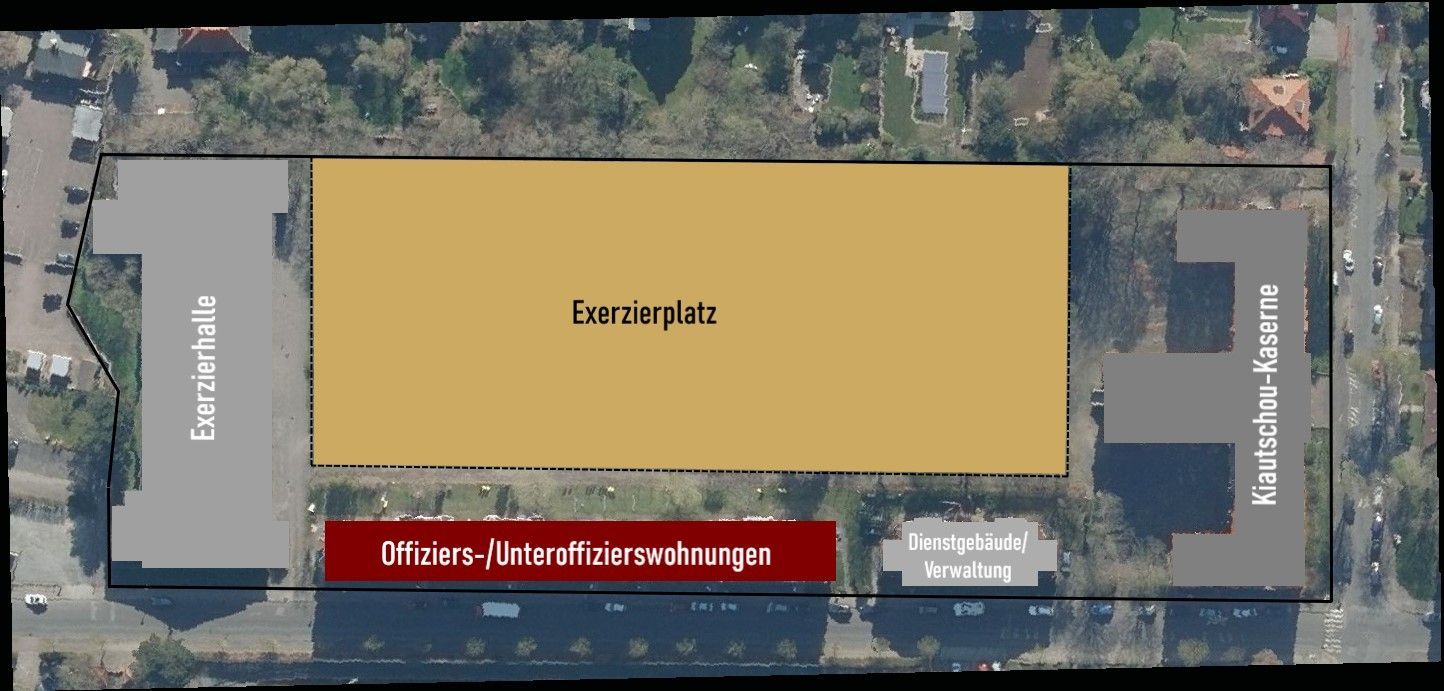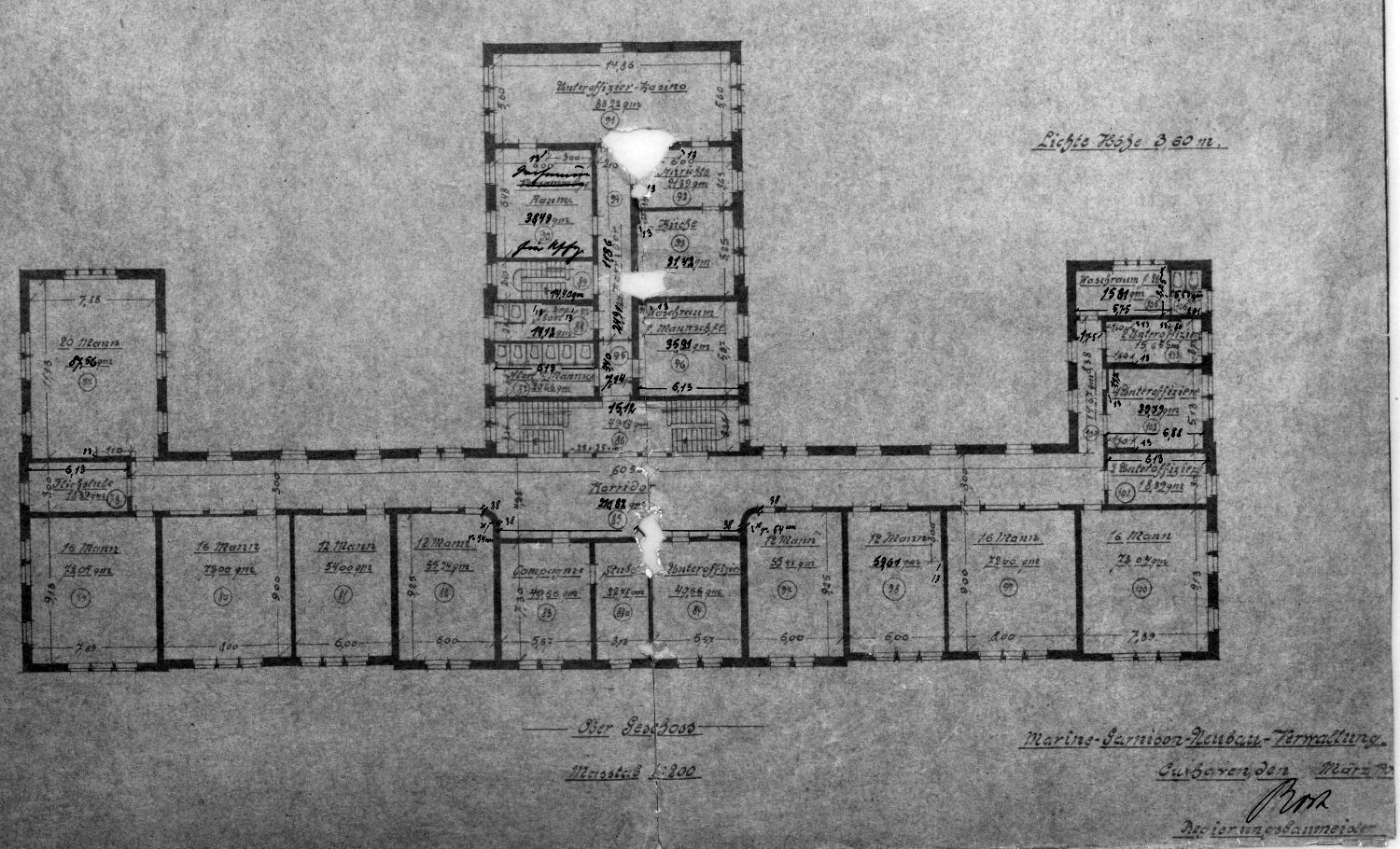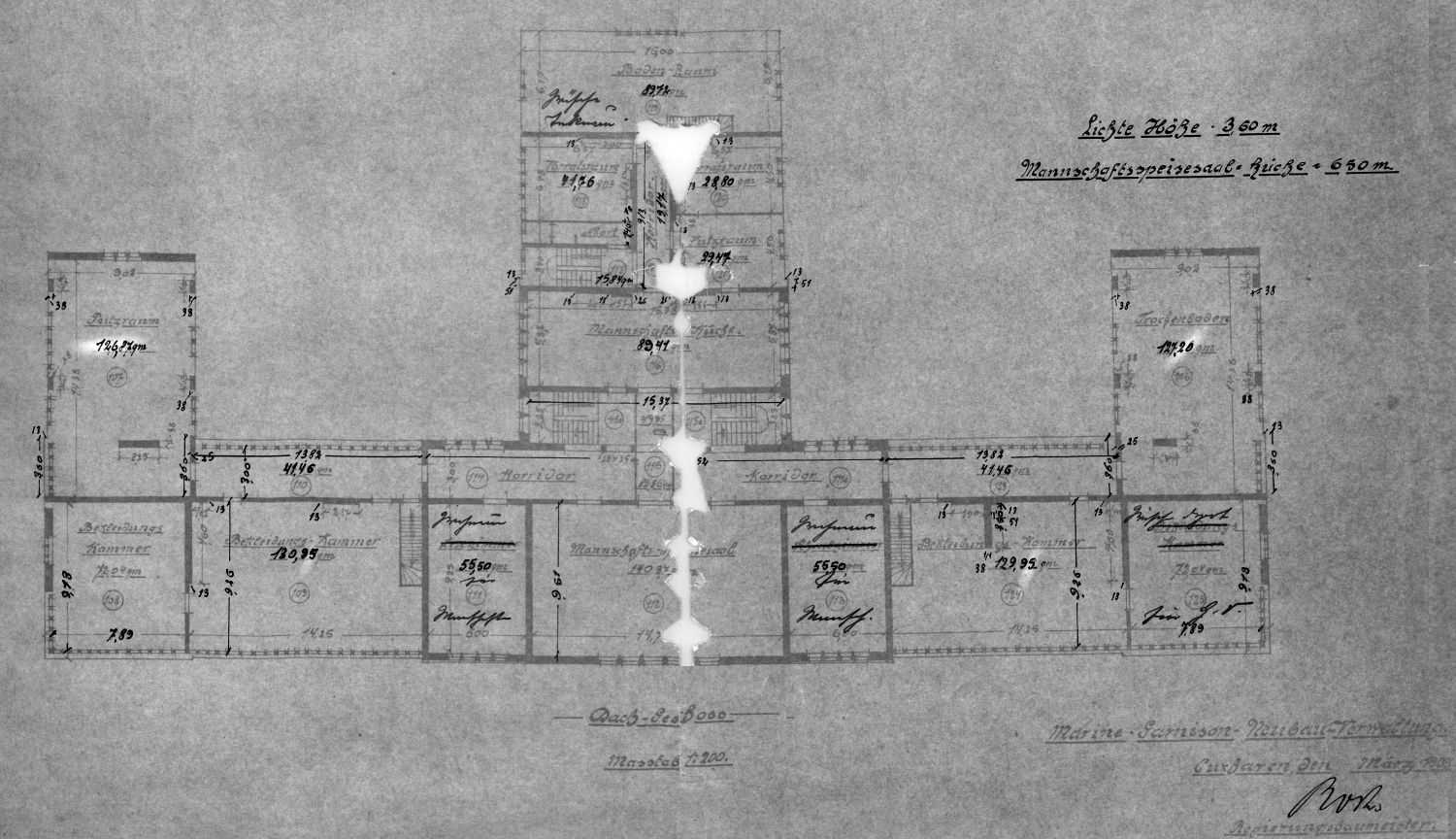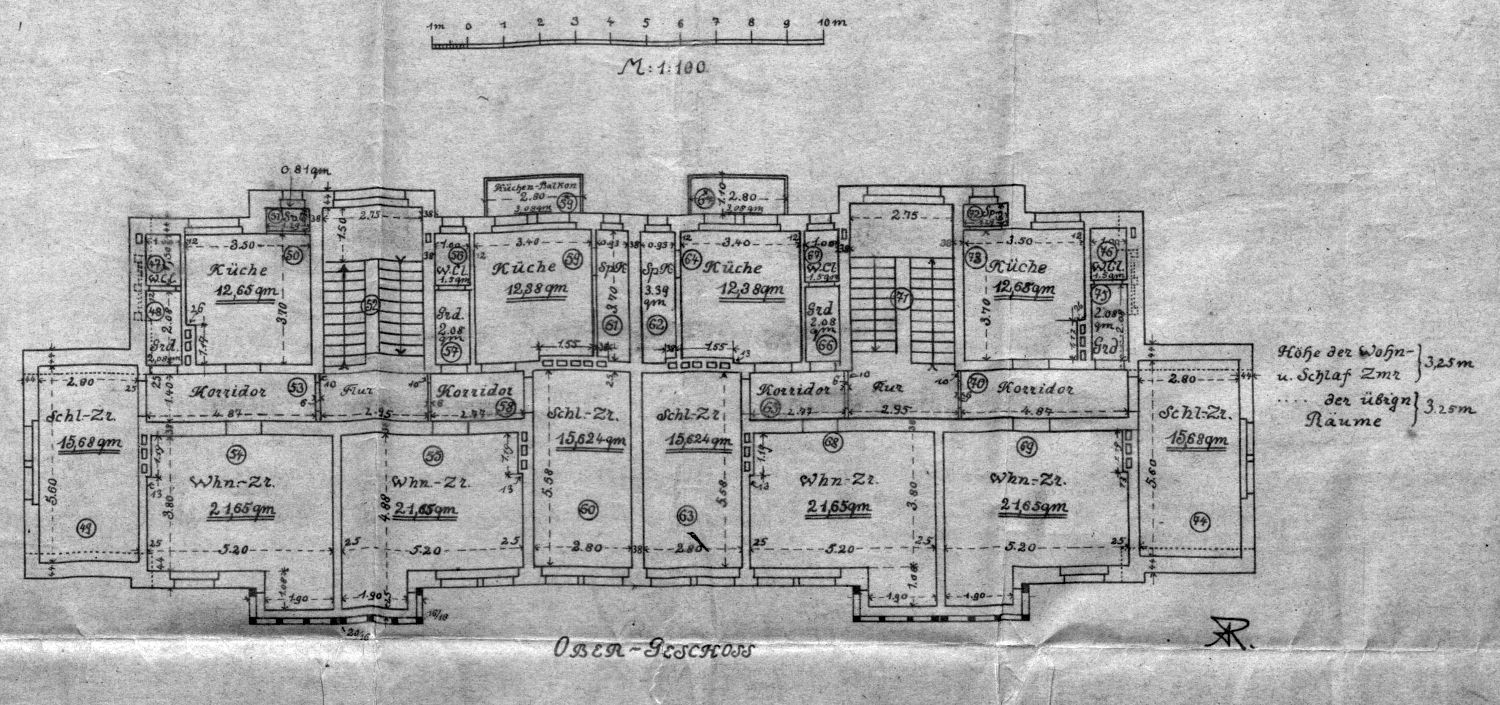
The building was handed over to the Marine Garrison New Building Administration in Cuxhaven on October 7, 1909 after a year of construction. It consisted of the barracks wing, the service and administration building (built in 1913), the drill hall (built in 1909) in the north-eastern part of the site, the large drill ground and the residential buildings for officers and non-commissioned officers on what was then Helgoländer Strasse. The site had only been acquired in 1907 and had previously been used as a nursery. In the same year that the main building was completed, the "Kiautschou" division of the Sailors' Artillery moved from Wilhelmshaven to Cuxhaven. The barracks were primarily used to train soldiers for their future duties in the German overseas colony "Tsingtao"/East Asia. However, troops were also trained for deployments in other colonies.
Which: RM 3_7137

The Kiautschou Barracks after completion.
What: MB
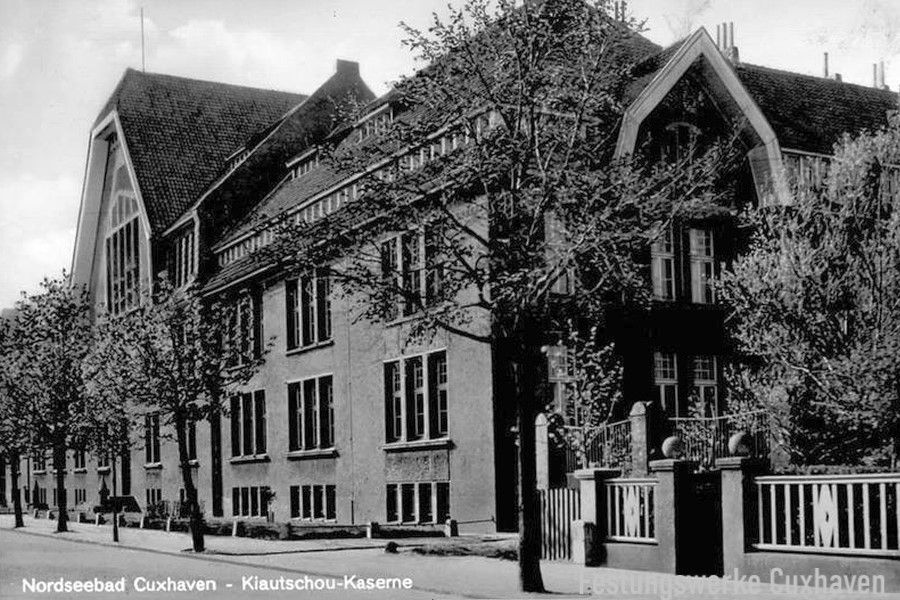
Blick von der Gorch-Fock-Straße.
Source: Old postcard
Building plan of the Kiautschou Barracks / Marine Garrison New Building Administration 1909
Gebäudeplan des Dienst- und Verwaltungsgebäude zur Kiautschou-Kaserne / Marine-Garnison-Neubau-Verwaltung 1909
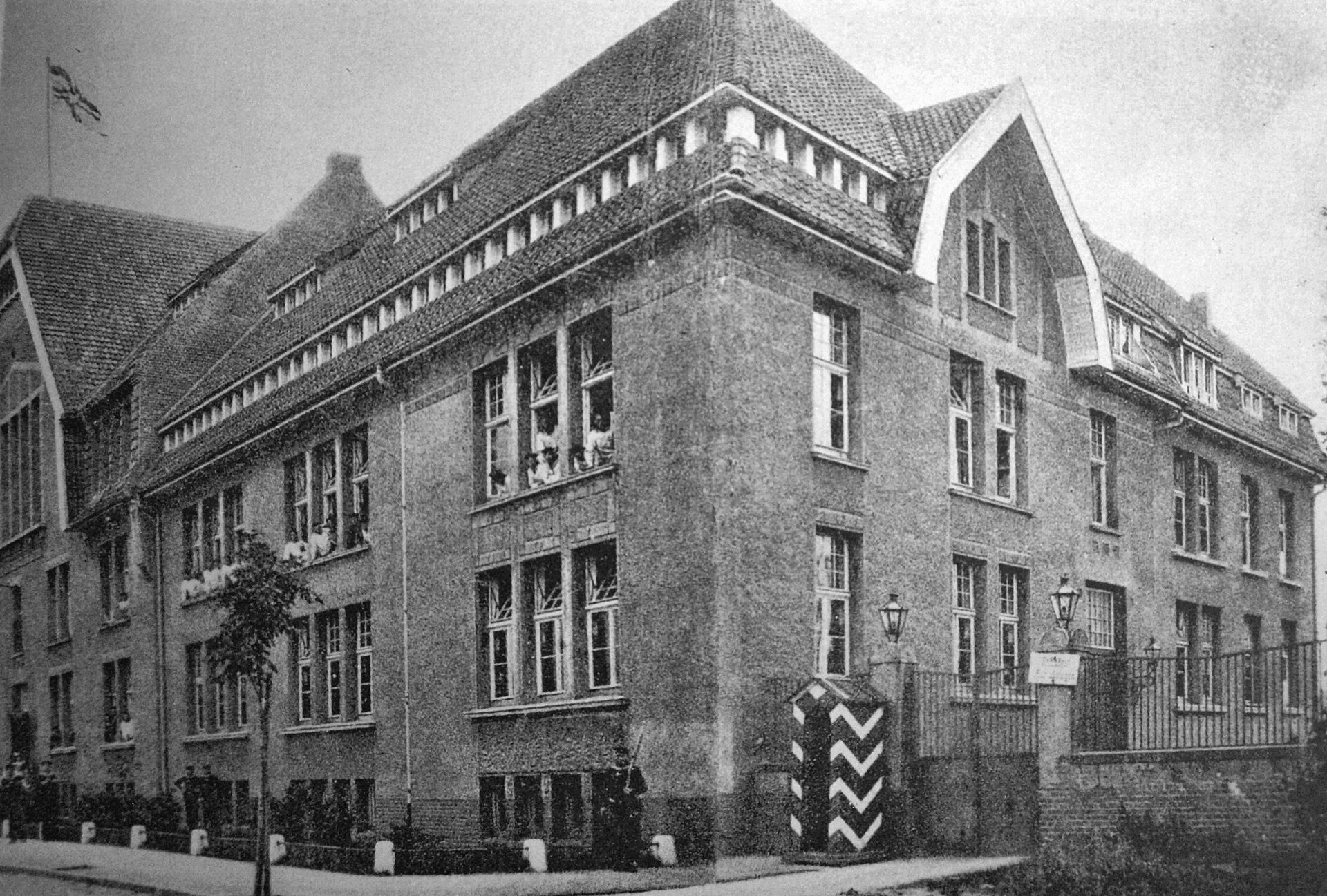
Around 1910 - The entrance to the courtyard with the guardhouse.
What: MB

Changing of the guard.
Source: Andreas Möller
Departure of German protection troops from Cuxhaven to German South-West Africa in September 1913
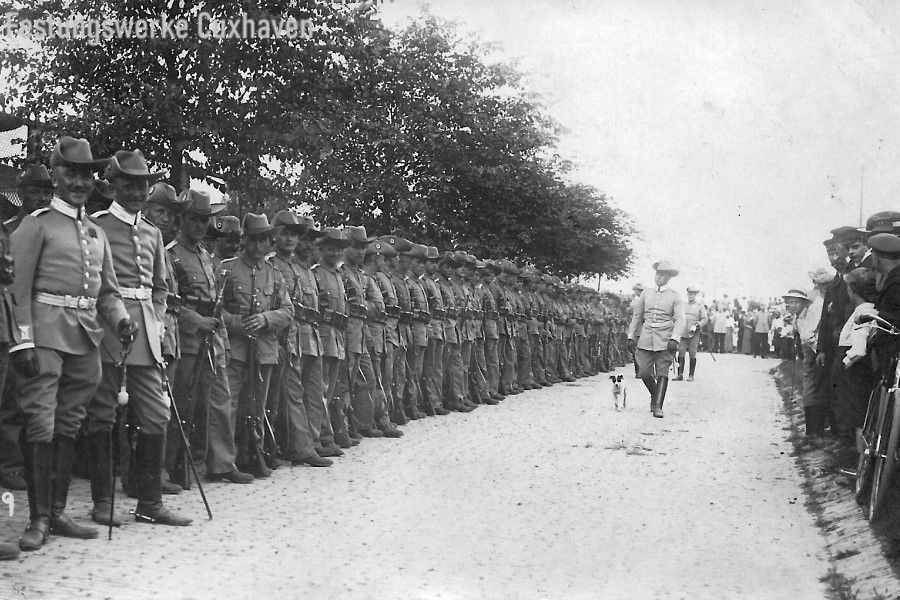
Arrived shortly before being shipped to the East Asian colonies in Tsingtau.
Source: Andreas Möller
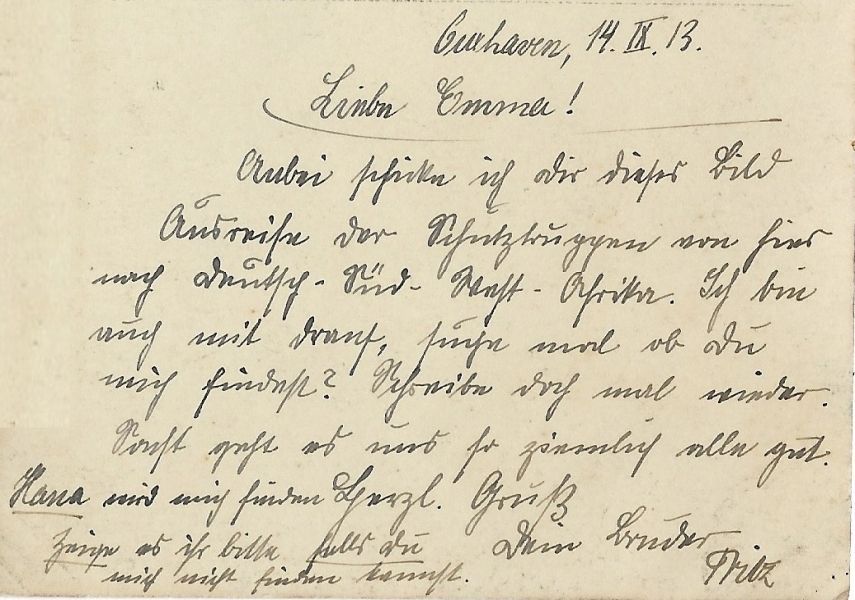

Source: Andreas Möller
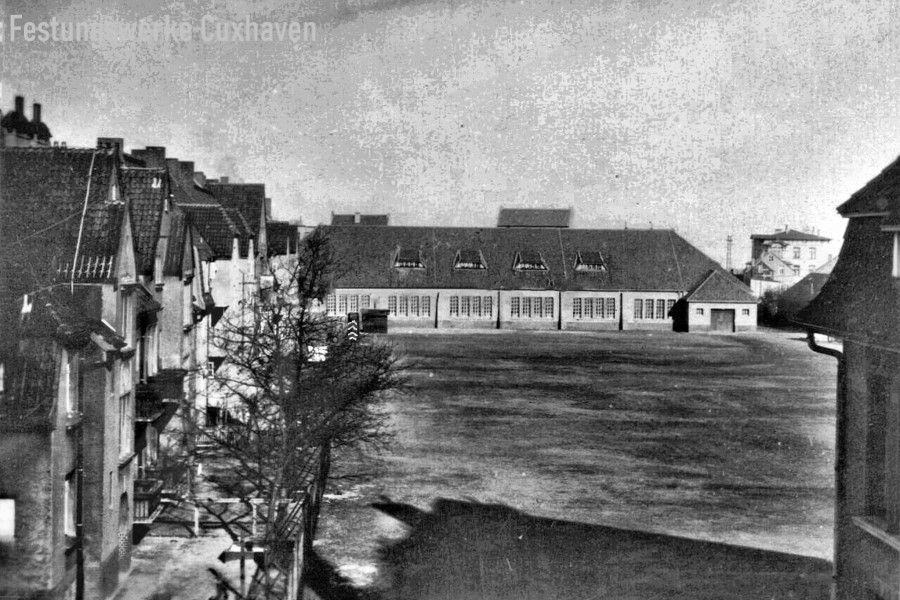
The parade ground of the barracks, in the background the parade shed (now Hermann-Allmers-Halle).
Quelle:M.B.

Basic training on the training ground. In the background, the first construction phase of the soldiers' housing on Helgoländer Strasse (now Hermann-Allmers-Strasse).
What: MB
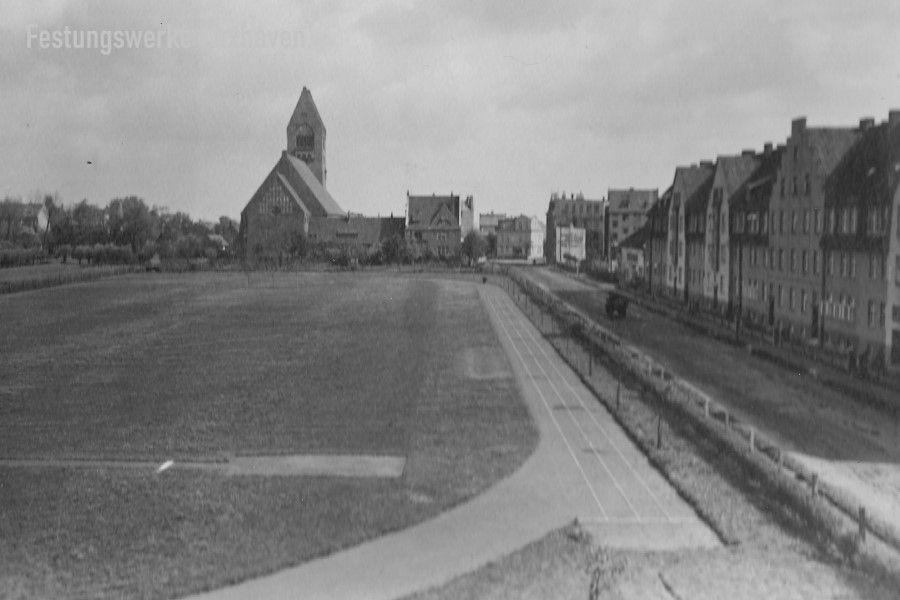
Gegenüber der Offiziers-/ Unteroffizierswohnungen an der Helgoländer Straße (später Tsingtao Str./heute Hermann-Allmers-Straße) befand sich der Sportplatz. Im Hintergund die evgl. Garnisonskirche.
Source: Andreas Möller
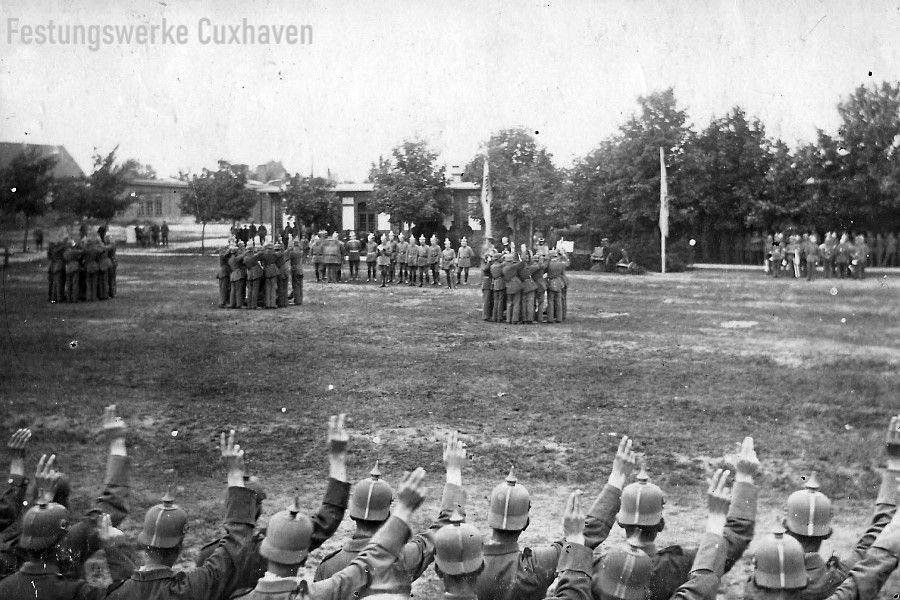
Swearing in of recruits on the sports field opposite.
Source: Andreas Möller
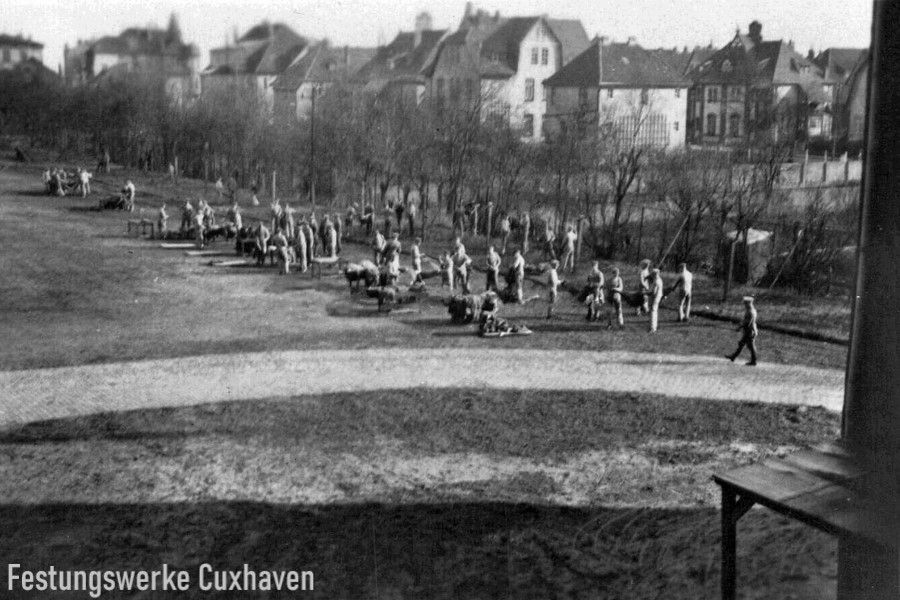
Soldiers of the III. Stamm-Seebatallion during military training on the parade ground.
Quelle:M.B.
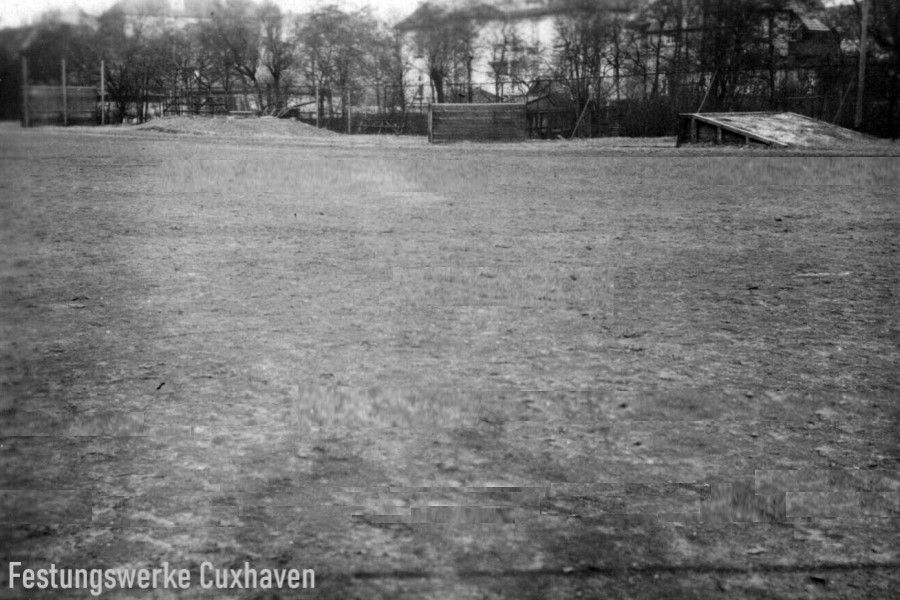
The Eskaladierbahn (obstacle course) on the former site, which was built later.
What: MB
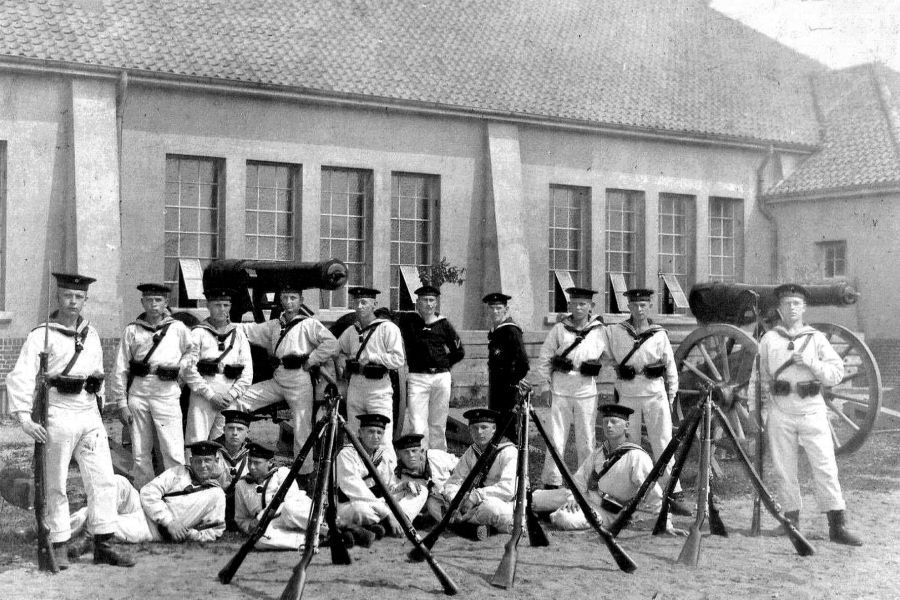
1910 - Soldaten des III. Stamm-Seebattallions vor der Exerzierhalle.
Quelle:M.B.
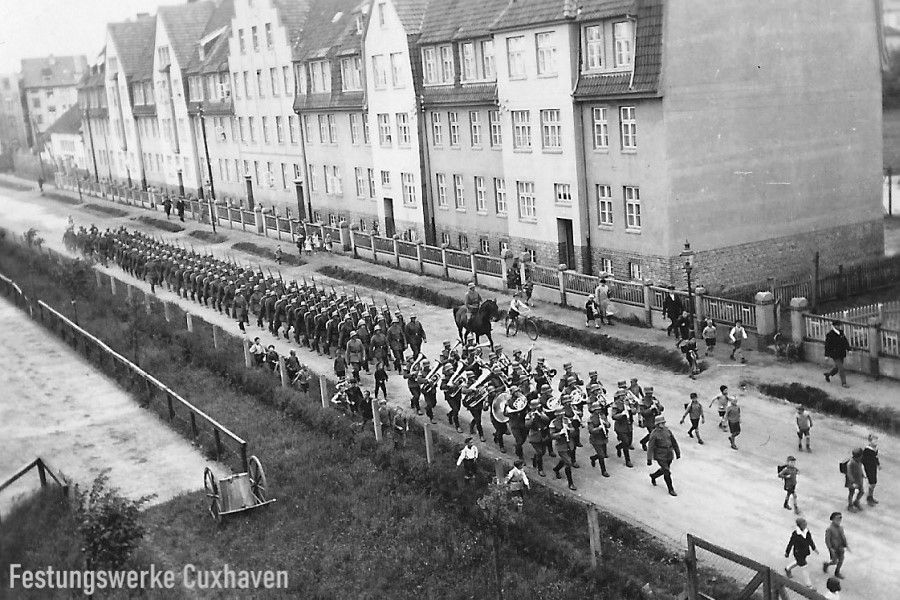
1931 - A unit in Helgoländer Straße (Hermann-Allmers-Straße) on the march back to the Kiautschou barracks.
Ab 1932 .......
With the seizure of power in 1932, the need for well-trained marines suddenly increased again. The existing capacity of this training location was fully utilized for this purpose.
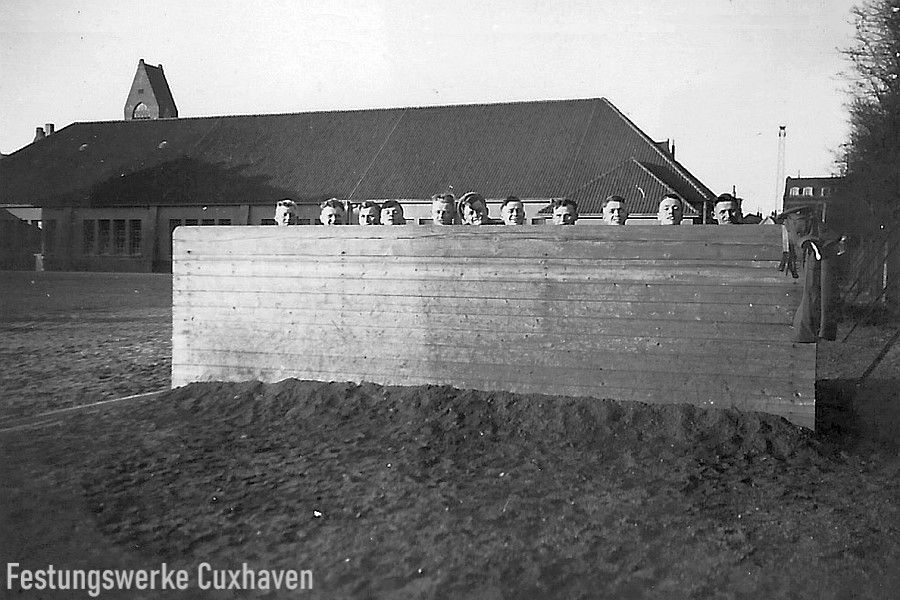
Group photo in front of a climbing wall on the obstacle course.
Quelle:M.B.
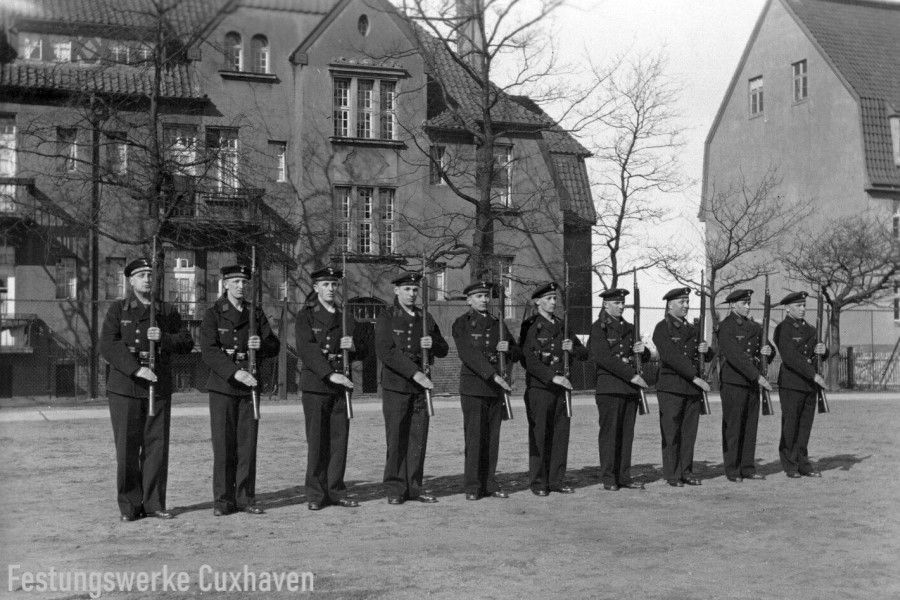
Marines during training, behind them the administration building.
What: MB
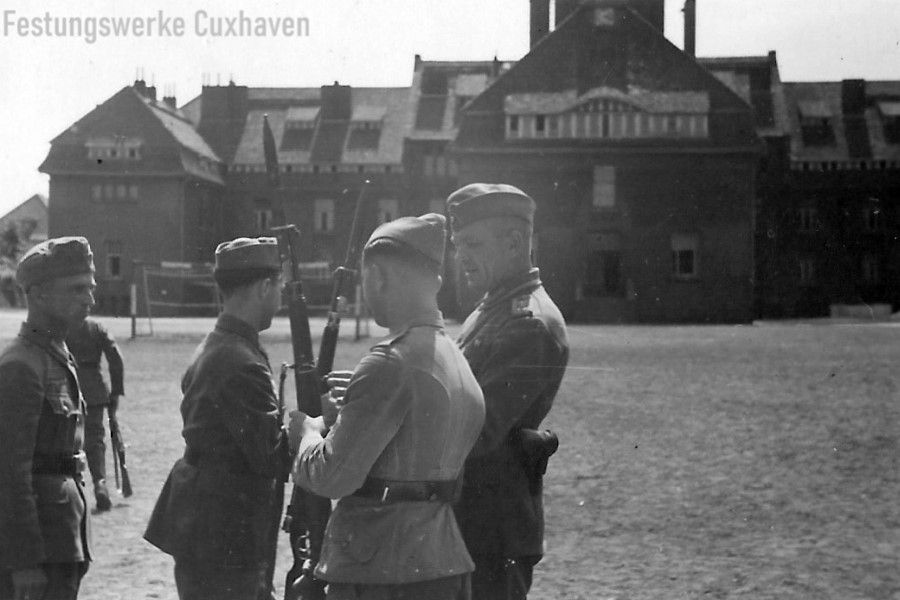
July 1940 - Training at the Ex. Platz.
Source: Andreas Möller

July 1940
Source: Andreas Möller
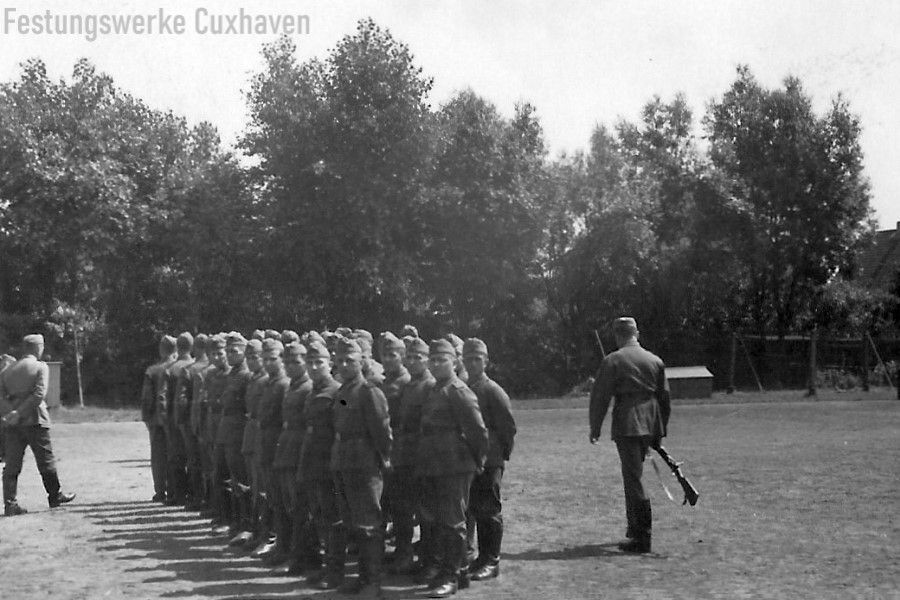
July 1940
Source: Andreas Möller
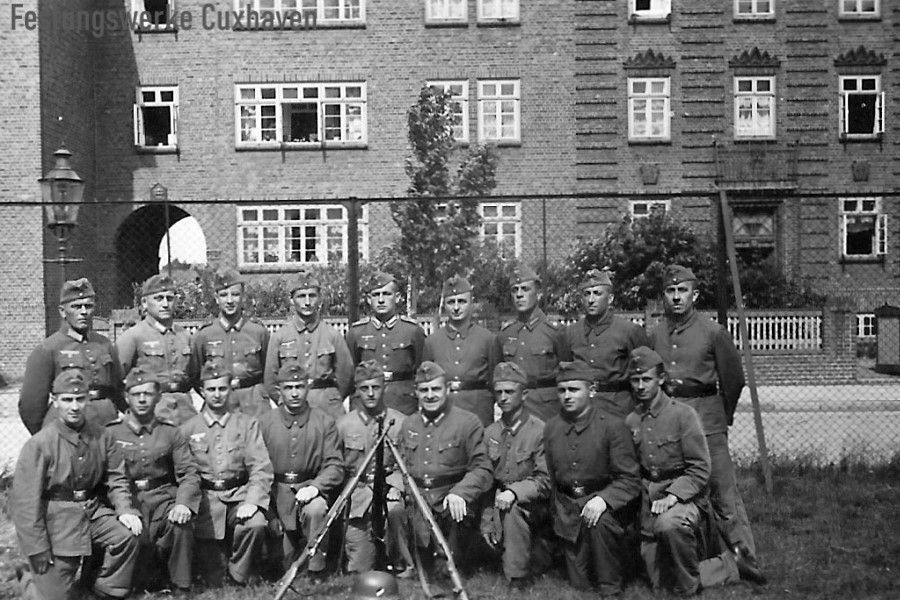
July 1940 - Group photo of the Helgoländer Straße.
Source: Andreas Möller
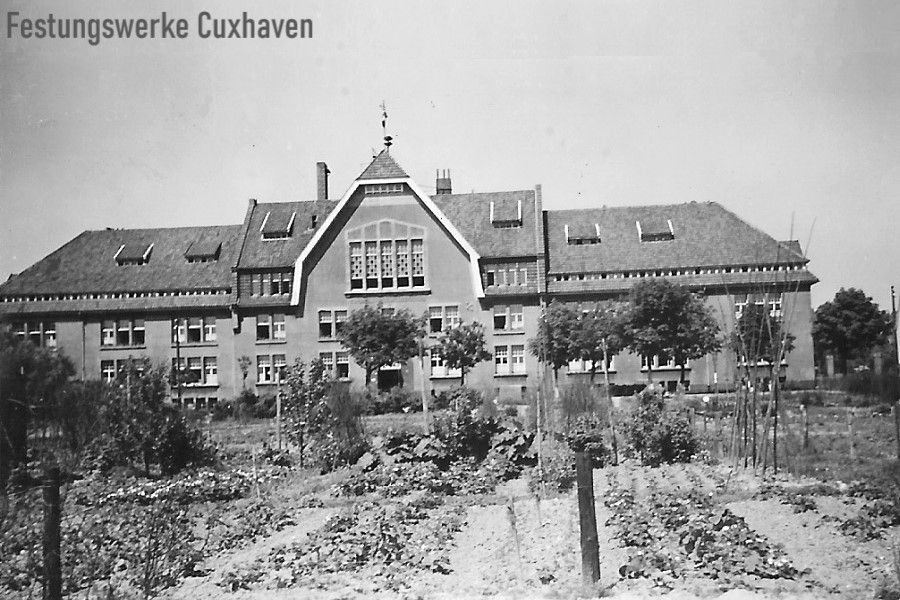
The barracks in 1940 from the front.
Source: Andreas Möller
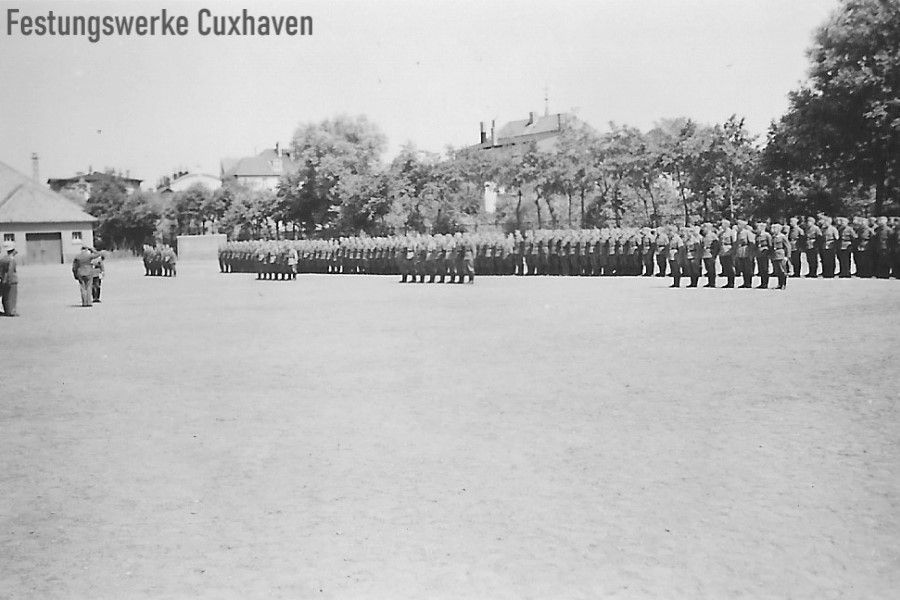
Parade formation
Source: Andreas Möller
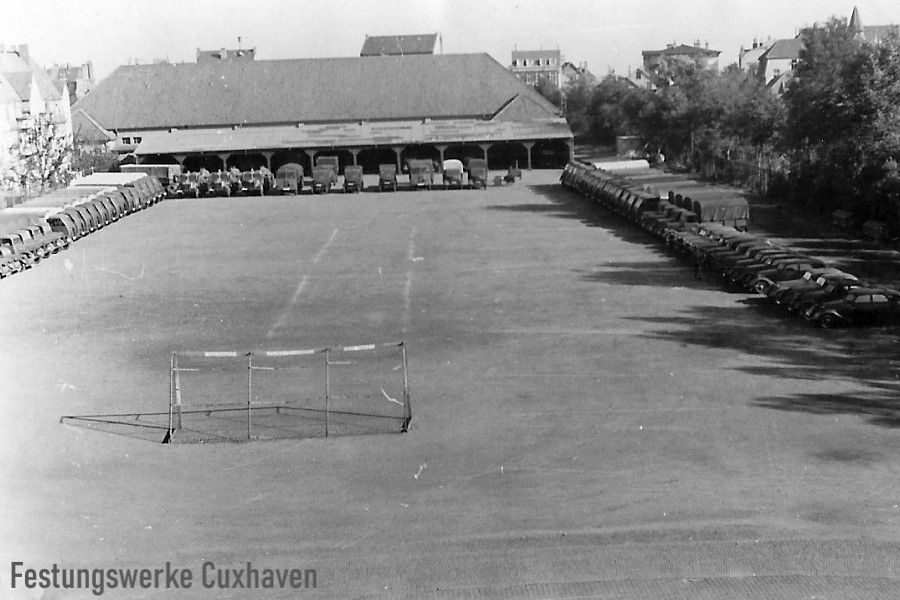
1940 - The vehicles of the 4th Marine Motor Vehicle Division on the parade ground. In the meantime, a shed was built for storing and maintaining vehicles.
Source: Andreas Möller
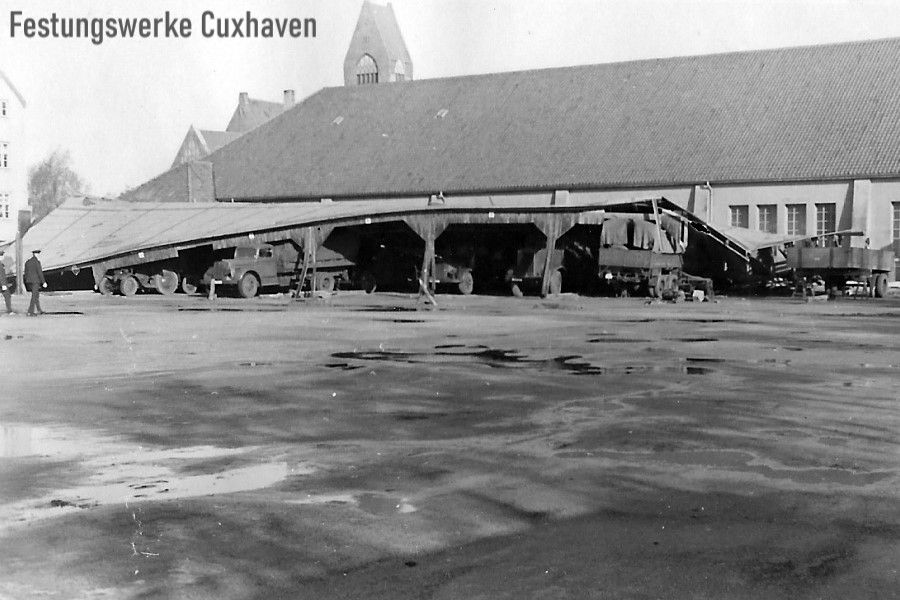
1940 - After a severe autumn storm, the vehicle shed was badly damaged.
Source: Andreas Möller
The former barracks area today ....
In 1949, the city of Cuxhaven took over the main building with the parade ground and the parade hall. The former barracks wing was converted into a primary school and named the Gorch Fock School, and the parade ground became the schoolyard. The parade hall was renovated into a municipal sports hall (Hermann Allmers Hall), which was also available to the school. Due to the very poor condition of the building due to years of lack of important investment and pollution from previous building materials, the Gorch Fock School was forced to move to another location in 2012. The same was true of the Low German theater group "Döser Speeldeel", which had performed in the school for decades. After a period of inactivity, the municipality looked for a buyer who would purchase the building together with half the schoolyard and upgrade it with an appropriate concept, good ideas and money. A Chinese investor was ultimately found and won the contract. Since then, absolutely nothing has happened in terms of the concept and upgrading of the complex, and the historic building and courtyard continue to deteriorate. Ironically, perhaps this is China's late revenge for Tsingtao.MB

2024 - The former Gorch Fock School has been in a deep sleep for years. A look through the courtyard gate, however, reveals the neglected state of the courtyard.
Source: Andreas Möller
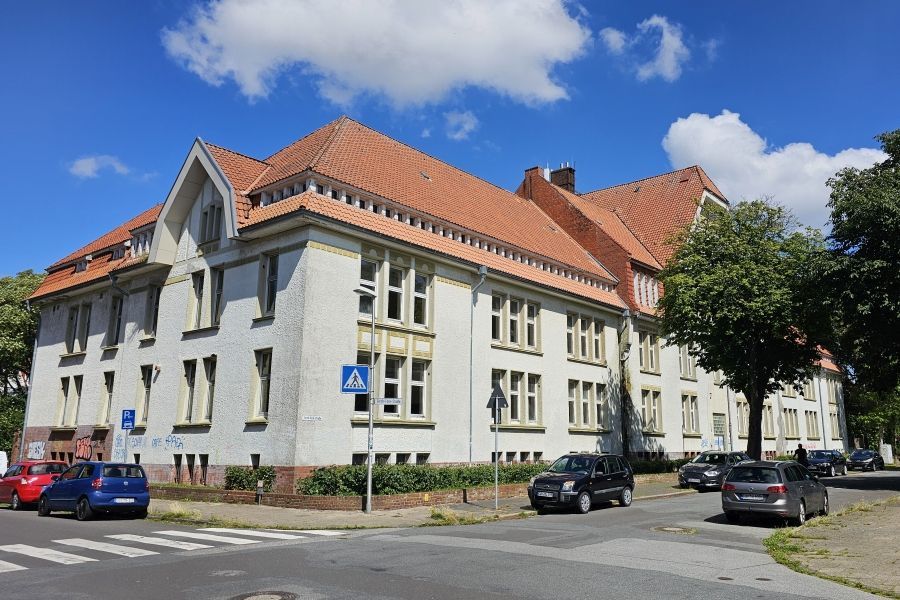
2024 - Except for some graffiti on the facade, the building still looks quite attractive from a distance.
Source: Andreas Möller
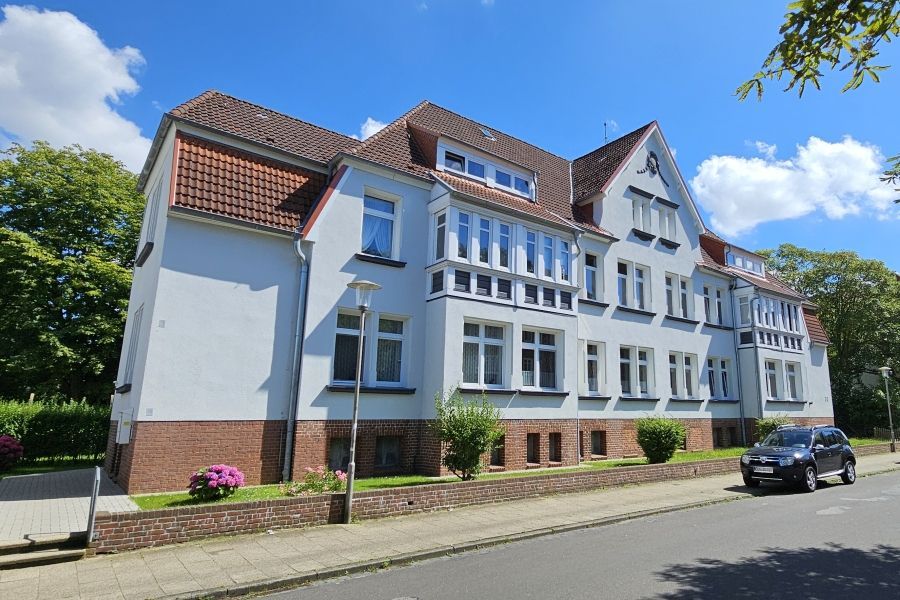
2024 - The former service and administration building of the Kiautschou barracks in Hermann-Allmers-Straße is in good external condition.
Source: Andreas Möller
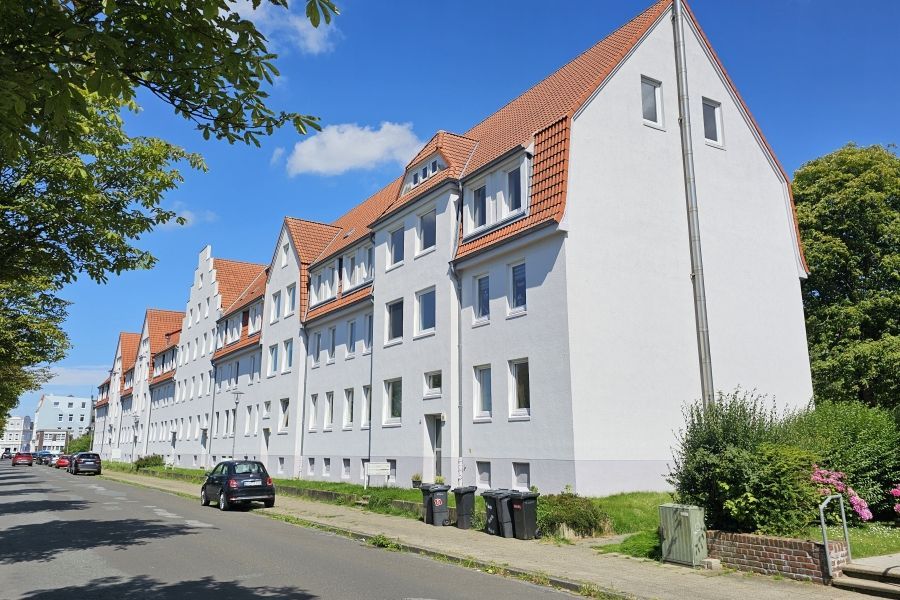
2024 - The former residential units for officers and non-commissioned officers have also been renovated.
Source: Andreas Möller

2024 - In contrast, the Hermann-Allmers-Halle (formerly Ex.-Halle) is on course for demolition purely from the outside. The closer you get to the 115-year-old historic building, the more you discover the consequences of a lack of maintenance. Time will tell how long the sports hall, currently used by various sports clubs, will last in the future.
What: MB




